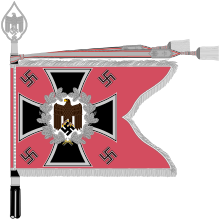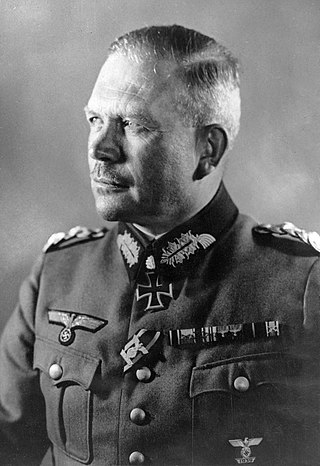
Heinz Wilhelm Guderian was a German general during World War II who, after the war, became a successful memoirist. An early pioneer and advocate of the "blitzkrieg" approach, he played a central role in the development of the panzer division concept. In 1936, he became the Inspector of Motorized Troops.

The German Army is the land component of the armed forces of Germany. The present-day German Army was founded in 1955 as part of the newly formed West German Bundeswehr together with the Marine and the Luftwaffe. As of January 2022, the German Army had a strength of 62,766 soldiers.

Georg Otto Hermann Balck was a highly decorated officer of the German Army who served in both World War I and World War II, rising to the rank of General der Panzertruppe.

Panzergrenadier, abbreviated as PzG (WWII) or PzGren (modern), meaning "Armour"-ed fighting vehicle "Grenadier", is the German term for the military doctrine of mechanized infantry units in armoured forces who specialize in fighting from and in conjunction with infantry fighting vehicles (IFVs) – that is, armoured troop carriers designed to carry a mechanized squad of six to eight soldiers into, during and out of combat while providing direct fire support for those troops.

A Panzer division was one of the armored (tank) divisions in the army of Nazi Germany during World War II. Panzer divisions were the key element of German success in the blitzkrieg operations of the early years of World War II. Later the Waffen-SS formed its own panzer divisions, and the Luftwaffe fielded an elite panzer division: the Hermann Göring Division.

The 2nd Panzer Division was an armoured division in the German Army, the Heer, during World War II.

The 29th Infantry Division was a unit of the German army created in the fall of 1936. It was based on the old Reichswehr 15th Infantry Regiment and drew its initial recruits from Thuringia. It was upgraded to 29th Motorized Infantry Division in the fall of 1937. The division was also known as the Falke-Division.

The 6th Panzer Division was an armoured division in the German Army, the Heer, during World War II, established in October 1939.
XXXXVIII Panzer Corps, was a corps-level formation of the German Army which saw extensive action on both the Eastern and Western Fronts during World War II.
A panzer corps was an armoured corps type in Nazi Germany's Wehrmacht during World War II. The name was introduced in 1941, when the motorised corps were renamed to panzer corps. Panzer corps were created throughout the war, and existed in the Army, the Waffen-SS and even the Luftwaffe. Those renamed from ordinary motorised corps retained their numbering.

Leo Dietrich Franz Reichsfreiherr Geyr von Schweppenburg was a German general in the Wehrmacht during World War II, noted for his pioneering stance and expertise in the field of armoured warfare. He commanded the 5th Panzer Army during the Invasion of Normandy, and later served as Inspector General of Armoured Troops. After the war he was involved in the development of the newly built German Army (Bundeswehr).
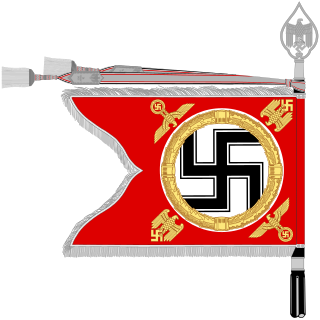
The Führerbegleitbrigade was a German armoured brigade and later an armoured division (Panzer-Führerbegleitdivision), in World War II. It grew out of the original Führer-Begleit-Battalion formed in 1939 to escort and protect Adolf Hitler at the front. It was formed in November 1944 and destroyed in April 1945.

Otto von Knobelsdorff was a German general during World War II who led the 19th Panzer Division and then held a series of higher commands. He was a recipient of the Knight's Cross of the Iron Cross with Oak Leaves and Swords.
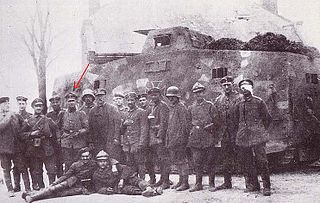
Ernst Volckheim was one of the founders of armored and mechanized warfare. A German officer in the First and Second World War, Volkheim rose to the rank of colonel, during World War II in the German Army. Little known outside of professional military and historical circles, Volckheim is considered the foremost military academic influence on German tank war proponent, Heinz Guderian, because both Volckheim's teaching as well as his 1924 professional military articles place him as one of the very earliest theorists of armored warfare and the use of German armored formations including independent tank corps.
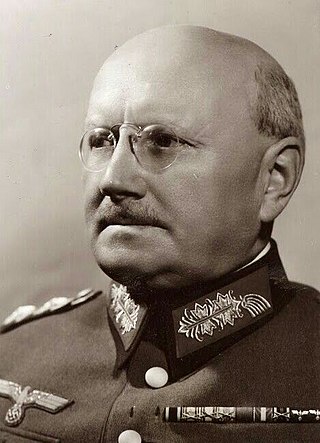
Oswald Lutz was a German General who oversaw the motorization of the German Army in the late 1920s and early 1930s and was appointed as the commander of the Wehrmacht's Panzer Troops Command in 1935.

The 25th Infantry Division was a military unit of the German Wehrmacht. It was later reclassified to 25th Motorized Infantry Division, and in June 1943 to the 25th Panzergrenadier Division.
Ernst Feßmann was a German general of the Heer who led the 267th Infantry Division in the early stages of World War II. Prior to the war, he was also notable for commanding one of the first Panzer Divisions.
A general of the branch, general of the branch of service or general of the ... is a three or four-star general officer rank in some armies. Several nations divide — or used to divide — their senior general officer ranks by the branch of troops they are qualified to command, or simply as an honorific title.
The Panzer Division Jüterbog was an armoured division of the Wehrmacht during World War II. Created on 20 February 1945, it was active for a short period of time.
The LIII Army Corps was a corps of the German Army during World War II. It was first deployed in 1941 and was active as part of various armies under Army Group Centre until 1944, when it was destroyed during the Soviet Red Army operations Bagration and Kutuzov in June and July 1944. The corps suffered enormous casualties as a result of the Soviet attacks. All of its divisions were destroyed and all but a few of the soldiers were killed or captured by the Soviet Union. A new formation named LIII Army Corps was subsequently deployed in December 1944, when it was assigned to Seventh Army and fought on the western front until surrendering to United States Army forces in April 1945.
